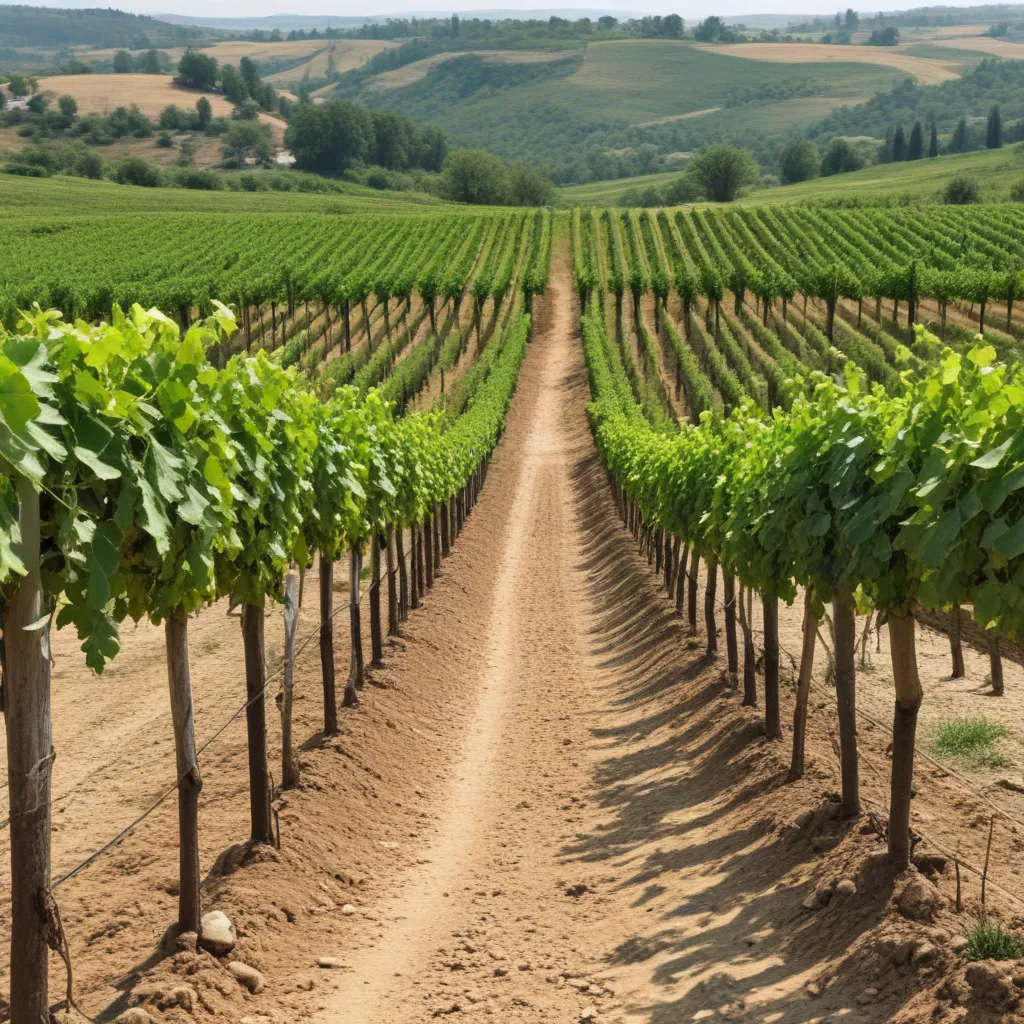
Study of Drought Periods in the Tokaj-Hegyalja Wine Region
The Tokaj-Hegyalja wine region in Hungary is renowned for its exceptional Furmint and Hárslevelű grape varieties, which thrive in the region’s unique mesoclimate. However, the effects of climate change pose a significant threat, with increasing frequency and severity of drought periods becoming a major concern for local vintners. Understanding these drought patterns is crucial for developing effective adaptation strategies to safeguard the region’s renowned wine production.
Geographical Factors
The Tokaj-Hegyalja wine region is situated in northeastern Hungary, nestled between the Hernád River to the northwest and the Tisza River and its tributary, the Bodrog, to the southeast. This triangular, over 88,000-hectare area covers 27 municipalities, each with its own distinctive terroir.
Climate and Precipitation
The region’s mesoclimate is characterized by a relatively cool continental climate, with warm, dry summers and cold, snowy winters. However, the effects of climate change have led to more erratic precipitation patterns, with longer periods of drought interspersed with intense rainfall events.
Analysis of precipitation data from the Tarcal and Sátoraljaújhely weather stations, which provide the most reliable data for the region, reveals concerning trends. While the average monthly rainfall totals have decreased in critical spring and summer months, the frequency of extended dry periods has increased, particularly in the second half of the study period (2012-2020).
Topography and Soil Composition
The Tokaj-Hegyalja region is characterized by its steep, terraced vineyards, often situated on loess-based soils. This unique topography and soil composition make the vineyards particularly susceptible to the damaging effects of drought and erosion, further exacerbating the challenges faced by local vintners.
Impact on Viticulture
The combination of prolonged drought periods, high temperatures, and intense UV radiation can have a detrimental impact on grape development and wine quality. Grape berries during the maturation phase are especially sensitive to these environmental stressors, leading to an increase in phenolic compounds that can negatively affect the sensory profile and aging potential of the wines.
Historical Drought Trends
Past Drought Occurrences
The study of historical precipitation and temperature data from the Tarcal and Sátoraljaújhely weather stations revealed that drought periods have become more frequent in the Tokaj-Hegyalja region over the past two decades. Between 2002 and 2020, at least one drought period was observed in 15 of the examined years, with 7 instances of two drought periods within a single year.
Duration and Severity
The most severe drought periods occurred in 2020 and 2015, with 118 and 99 drought days, respectively. These extended dry spells favored the production of botrytis-free, full-bodied dry wines, while the sought-after aszú (noble rot) wines became scarce across the entire region.
Impacts on Wine Production
The timing of the drought periods has a significant impact on the region’s wine production. Droughts ending in the first half of September or earlier were more favorable for the development of the noble rot fungus, Botrytis cinerea, which is essential for the production of the renowned Tokaj aszú wines. In contrast, droughts extending into the latter part of September or beyond often resulted in a poor aszú harvest.
Resilience Strategies
Adaptive Vineyard Practices
To combat the challenges posed by drought, local vintners have explored various adaptive strategies, such as the use of drought-tolerant rootstocks, the implementation of cover crops and mulching to reduce soil erosion, and the strategic application of shade netting to mitigate the effects of extreme heat and UV radiation on grape development.
Irrigation and Water Management
While legal and economic constraints have historically limited the use of irrigation in the Tokaj-Hegyalja region, the recent changes to Hungary’s irrigation laws have opened up new possibilities for water management strategies. Careful planning and optimization of irrigation timing and application are crucial to ensure the vines’ water needs are met without compromising the delicate balance of the region’s mesoclimate.
Grape Varietal Selection
The predominant use of the Furmint and Hárslevelű grape varieties in the Tokaj-Hegyalja region is largely due to their relative drought tolerance and efficient stomatal control. As climate change continues to impact the region, the exploration of additional drought-resistant grape varieties may become a viable option to diversify the region’s vineyards and enhance resilience.
Mitigation and Adaptation
Climate Change Projections
Climate change models predict that the Tokaj-Hegyalja region will face increasingly frequent and prolonged drought periods, accompanied by a shift in precipitation patterns. The region’s vintners must actively prepare for these challenges to ensure the long-term sustainability of their wine production.
Sustainable Farming Techniques
In addition to the adaptive vineyard practices mentioned earlier, the adoption of more sustainable farming techniques, such as organic viticulture and precision farming, can help mitigate the impacts of drought and build resilience within the Tokaj-Hegyalja wine region.
Policy and Regulatory Frameworks
The Tokaj-Hegyalja region’s designation as a UNESCO World Heritage Site underscores the importance of preserving its unique cultural and natural heritage. Policymakers and regulatory bodies must work closely with local vintners to develop comprehensive frameworks that support the region’s adaptation to climate change, ensuring the continued production of its world-renowned wines.
The Tokaj-Hegyalja wine region’s resilience in the face of climate change-driven drought periods will require a multifaceted approach, combining cutting-edge viticulture research, innovative farming practices, and collaborative policymaking. By embracing these strategies, the region’s vintners can safeguard the future of this exceptional wine-growing area, preserving its rich heritage and delivering a world-class wine experience for generations to come.
